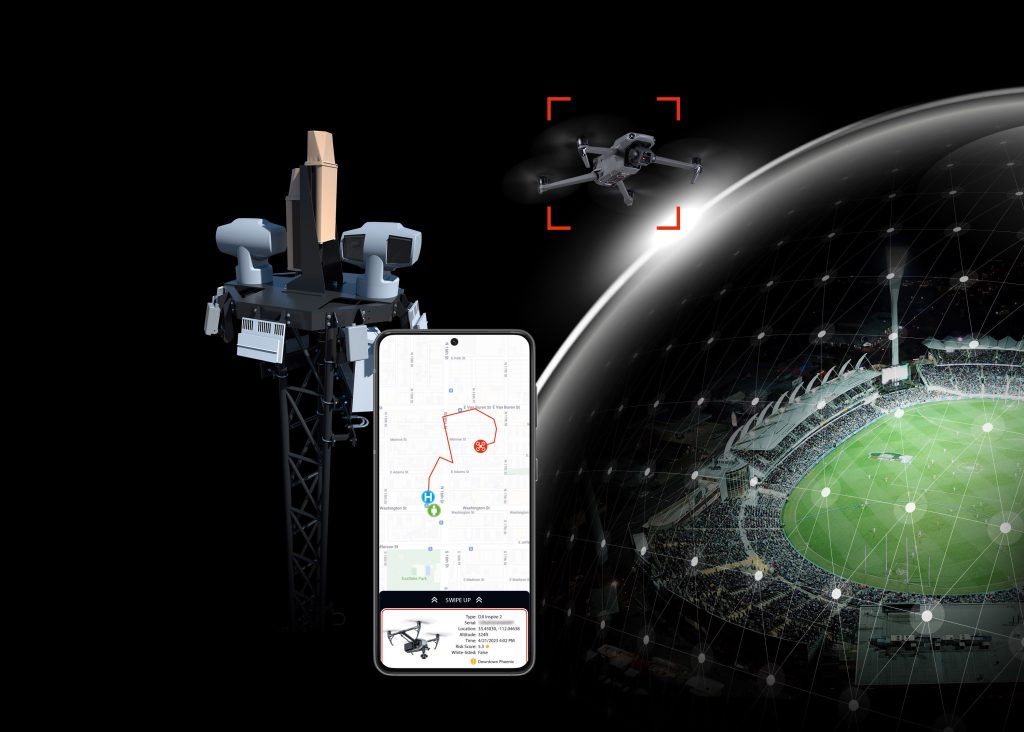Attendees at this year’s Copa America final at Miami’s Hard Rock stadium described the football game as the “worst event” they’d ever seen because of the lack of stadium security.
Before kick-off, chaos erupted as both ticket and non-ticket holders surged through the gates, resulting in a stampede.
Witnesses told WSVN news that security was virtually non-existent.
“People were climbing on top of the stadium to get inside, and it was clear there was no security stopping them,” one fan said. Another added: “I felt like my life was in danger.”
“No information had been given by anybody, not even over a microphone or a loud PA system.”
Incidents over the past summer, like a terrorist threat forcing pop singer Taylor Swift to cancel her Vienna dates, and Green Day exiting the stage mid-song due to a lone drone entering the venue, demonstrate that stadium security is under immense strain and urgently needs reinforcement.
So, how can digital technologies aid in the event of a stadium threat? TI dives into the solutions aiming to keep stadium events fun and safe for all.
What is smart announcement technology in stadiums?
When crisis strikes at a large venue, it’s likely limited to one section of what could be a venue with capacity as big as 100,000.
Sounding alarm bells and exit instructions for all attendees to hear may be unnecessary and cause more panic and danger.
Josh Dean, CEO of UK-based mass communication provider Audiebant says events such as this is what inspired his firm to launch its solution.
Audiebant’s technology offers targeted communication messages for different zones within a venue, or even school or healthcare environment.
“This idea came from the Manchester Arena bombing,” he says.
In 2019, a terrorist attack occurred at a concert by American pop singer Ariana Grande. The attack killed 22 people and injured 1,017 within the arena’s foyer.
“Reading up on witness accounts, nobody knew what to do. Everybody was running in different directions, and there was no communication,” says Dean.
Earlier this month, Martyn’s Law’, a Terrorism (Protection of Premises) Bill, was introduced to the UK parliament to ensure public premises and events are better prepared for terrorist attacks and ready to respond. Dean says they felt like it “was written for them.”
With the Manchester bombing in mind, Audiebant focused on creating a system where speakers and screens are categorised by the area they are in.

Josh Dean, CEO, Audiebant
The hard-wired technology is operable via a smartphone or computer using an app accessible only by venue security.
Each client has custom zone-specific messages that direct people to specific exits.
Staff can also make text-to-speech announcements with its proprietary AI voice and visual on-screen announcements in the event of an unplanned scenario from within the app.
Audiebant has a full-time security officer to ensure the technology’s security and runs penetration tests to prevent unauthorised access.
“Recently, a college used our system for a phased evacuation in a lockdown, evacuating individual buildings separately,” explains Dean. “The system made targeted messaging easy, so everyone knew exactly what to do.”
On top of this, venues can also offer the app ‘Audiesafe’ to visitors and staff to send specific messages as the event occurs.
How do venues use drone detection for public safety?
From the ground up into the air, drones are a proven threat to arenas and stadiums.
However, venues can use drone detection systems equipped with AI and machine learning to detect unauthorised drones.
These systems identify the drone’s location and inform security teams to neutralise potential threats.
In 2013, while the then-German Chancellor Angela Merkel spoke on stage, a protestor’s drone crashed before her.
While no harm had been done, this alongside other incidents inspired the launch of drone security firm Dedrone and its app DedroneCityWide.

Dedrone for stadiums
“The idea for DedroneCityWide was inspired by the growing need for drone detection, tracking, and identification for both public safety and private security,” says Dedrone’s CMO and head of government affairs, Mary-Lou Smulders.
Currently offered in over 50 US cities, DedroneCityWide is simply an app that pinpoints where a drone is flying on a map.
It uses a pre-installed network of drone detection devices and AI and ML-powered sensors to detect drones in the air.
The app takes inputs from radio frequency sensors, radar, cameras, and acoustic sensors to identify the object, confirm it is a drone, locate it and track the flight.
Out in force
Law enforcement and other firms have already registered their own drones, and the app can also determine whether a drone is ‘friendly’ based on a serial number and take-off location.
“This is useful for law enforcement as they launch drones as first responders programs and private security at sporting events, for example, where drones are often used to capture aerial footage,” says Smulders.
It has helped law enforcement in situations such as apprehending a pilot using a drone to drop Sea Dye into local pools in New Jersey State, and has also been used in Ukraine to support in defending their homeland.
One of it’s customers, Tulsa County Sheriff’s Office, says that before Dedrone, drones were only detected by sight: “Now that we have Dedrone on site here, we’re seeing drones everywhere, and the sheer volume is quite alarming.”
DedroneCityWide is also used across Barcelona, Spain. The police force there, the Mossos D’Esquadra, said: “As drones become increasingly popular, it is essential for law enforcement to have a counter-drone program to respond to this persistent and escalating threat.”
“An unauthorised drone in a public venue, or even at the Barcelona F1 race, could be dangerous to people and property below. My team is now immediately alerted about any unauthorised drones.”
John Cullen, strategic marketing director of digital identity at Thales, a multinational cyber security and aerospace defence firm, says drones can also undertake surveillance tasks at a distance.
“This remote monitoring and assessment is particularly valuable for identifying threats or when there is limited manpower on the ground.”
He adds: “Thanks to high-resolution cameras, drones can provide greater transparency with real-time video feeds of what is happening on the ground.
“This can help event organisers and police forces identify hazards and monitor crowd movements and density for effective crowd control.”
What are the benefits of biometric entry at stadiums?
Cullen suggests including biometrics and digital IDs to further mitigate potential stampedes and identify any criminals.
Biometric entry helps prevent ticket fraud, reduces entry queues, and enhances security by verifying attendees’ identities in real time using facial or fingerprint recognition.
“Each attendee’s digital identity can then be verified by the event organisers via a form of biometrics on entry, namely through facial or fingerprint recognition, thereby authenticating the ticket and ticket holder.”
With biometrics on hand, if a stadium becomes a crime scene, Cullen says mobile biometric identification technologies “empower officers to process fingerprints and identify suspects in dynamic event environments quickly.
“These technologies mean the police can analyse fingerprints and perform facial recognition wherever and whenever via a standard police smartphone. Users can then access a wealth of information regarding the suspect’s identity, any crimes committed, and court history.”